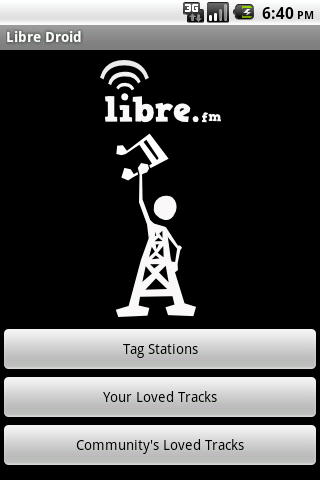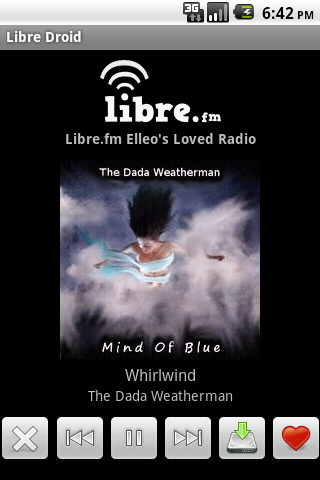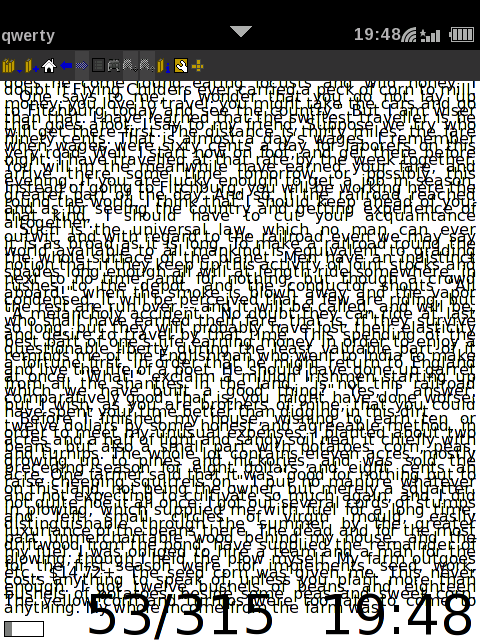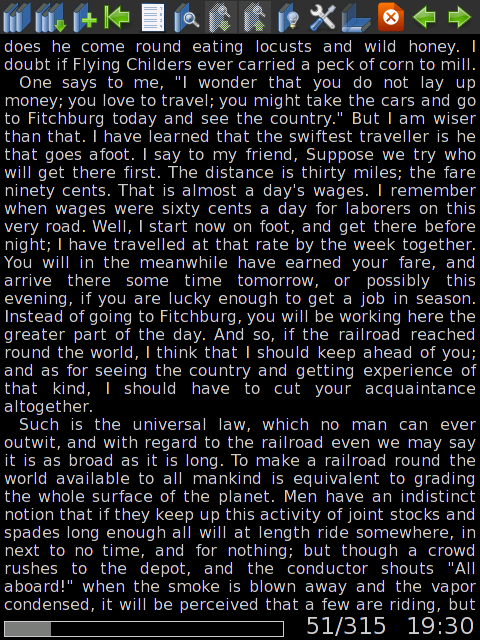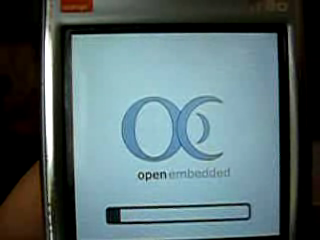This tutorial takes you through the steps necessary to build a simple application which is capable of displaying data from OpenStreetMap and find driving routes between two locations without the need for any network services.
The final application will look something like this:

And can even be used on the Nokia N900 mobile phone (running Maemo):

Preparation
The libraries you’ll need to install for this are:
- Memphis – A map renderer. Version 0.2.1 or later.
- libchamplain – Provides clutter based mapping widgets. You’ll need version 0.7.1 or later for memphis support, when compiling add –enable-memphis to the ./configure parameters.
- Spatialite – Provides OpenGIS compatible routing (and more) on top of SQLite. This needs to be version 2.4rc3 or later. You’ll also need the spatialite-tools package for importing OSM data
Next we’ll need to acquire some OSM data to work with, for this example we’ll be using a small area around Nantwich in the UK, which can be download here. Data for entire countries can be downloaded from CloudMade, or data from a smaller specific area can be obtained from the OpenStreetMap API.
Displaying the map
#include <gtk/gtk.h>
#include <champlain/champlain.h>
#include <champlain/champlain-memphis-renderer.h>
#include <champlain-gtk/champlain-gtk.h>
#include <clutter-gtk/clutter-gtk.h>
#define MAP "nantwich.osm"
#define RULES "default-rules.xml"
static GtkWidget *window;
static ChamplainMapSource *tile_source = NULL;
static ChamplainMemoryCache *memory_cache = NULL;
static ChamplainView *champlain_view;
static void on_destroy(GtkWidget *widget, gpointer data) {
gtk_main_quit();
}
static void zoom_to_map_data(ChamplainView *view) {
ChamplainMemphisRenderer *renderer;
ChamplainBoundingBox *bbox;
gdouble lat, lon;
/* Fetch a reference to the memphis renderer */
renderer = CHAMPLAIN_MEMPHIS_RENDERER(
champlain_map_source_get_renderer(CHAMPLAIN_MAP_SOURCE(tile_source)));
/* Find what section of the world it covers */
g_object_get(G_OBJECT(renderer), "bounding-box", &bbox, NULL);
/* Find the centre of that region */
champlain_bounding_box_get_center(bbox, &lat, &lon);
/* Zoom in on that position */
champlain_view_center_on(CHAMPLAIN_VIEW(view), lat, lon);
champlain_view_set_zoom_level(CHAMPLAIN_VIEW(view), 14);
}
int main(int argc, char *argv[]) {
GtkWidget *widget, *vbox, *bbox, *button, *viewport, *label;
ChamplainMapSource *source;
ChamplainRenderer *renderer;
ChamplainMapSourceChain *source_chain;
ChamplainMapSource *src;
ChamplainRenderer *image_renderer;
guint tile_size;
/* Initialize libraries */
g_thread_init(NULL);
gtk_clutter_init(&argc, &argv);
/* Create a GTK window */
window = gtk_window_new(GTK_WINDOW_TOPLEVEL);
gtk_window_set_title(GTK_WINDOW(window), "Local rendering and routing tutorial");
g_signal_connect(G_OBJECT(window), "destroy", G_CALLBACK(on_destroy), NULL);
/* Create an embedded champlain GTK widget */
widget = gtk_champlain_embed_new();
/* Get the ChamplainView contained within the GTK widget */
champlain_view = gtk_champlain_embed_get_view(GTK_CHAMPLAIN_EMBED(widget));
/* Setup memphis as our tile source. Normally champlain would download tile images
* from one of a number of online services, by using memphis we can render all
* the tiles locally without the need for a network connection. */
ChamplainMapSourceFactory *factory = champlain_map_source_factory_dup_default();
source = champlain_map_source_factory_create(factory, "memphis-local");
renderer = champlain_map_source_get_renderer(CHAMPLAIN_MAP_SOURCE(source));
champlain_memphis_renderer_load_rules(CHAMPLAIN_MEMPHIS_RENDERER(renderer), RULES);
champlain_file_tile_source_load_map_data(CHAMPLAIN_FILE_TILE_SOURCE(source), MAP);
tile_source = CHAMPLAIN_MAP_SOURCE(source);
source_chain = champlain_map_source_chain_new();
tile_size = champlain_map_source_get_tile_size(tile_source);
src = champlain_map_source_factory_create_error_source(factory, tile_size);
champlain_map_source_chain_push(source_chain, src);
champlain_map_source_chain_push(source_chain, tile_source);
/* Use a memory cache so that tiles don't have to be re-rendered everytime they're
* displayed. Another option would be to use a file cache allowing the tiles to be
* saved across multiple runs of the program (but at the expense of disk space). */
image_renderer = CHAMPLAIN_RENDERER(champlain_image_renderer_new());
/* We store up to 200 tiles in the cache */
memory_cache = champlain_memory_cache_new_full(200, image_renderer);
champlain_map_source_chain_push(source_chain, CHAMPLAIN_MAP_SOURCE(memory_cache));
g_object_set(G_OBJECT(champlain_view), "map-source", source_chain, NULL);
/* Request a minimum size of 400x300 */
gtk_widget_set_size_request(widget, 400, 300);
/* Add our embedded champlain widget to the window */
gtk_container_add(GTK_CONTAINER(window), widget);
/* Display the window */
gtk_widget_show_all(window);
/* Find our OSM data on the map and show it */
zoom_to_map_data(champlain_view);
/* Start the GTK main loop */
gtk_main();
return 0;
}
To compile this example (assuming you’ve saved it to ‘champlain-routing.c’) run:
gcc `pkg-config --cflags --libs spatialite champlain-0.8 champlain-gtk-0.8 champlain-memphis-0.8` champlain-routing.c -o champlain-routing
This is a fairly standard champlain program except it uses the memphis renderer to create tile images locally instead of fetching them from an online tile server. In addition to nantwich.osm you’ll also need default-rules.xml, which defines the appearance of the map.
The resulting program will give us a small window that displays our map data without the need for an internet connection:

Creating routing data
Before we can performing any routing tasks we first need to import our OSM data into spatialite and create a routing network from it.
Importing OSM data into spatialite
spatialite_osm -o nantwich.osm -d nantwich.sqlite -T roads -m
Generating a routing table
spatialite_network -d nantwich.sqlite -T roads -g geometry -c cost -t node_to -f node_from -n name --oneway-fromto oneway_fromto --oneway-tofrom oneway_tofrom -o roads_net_data
spatialite nantwich.sqlite 'CREATE VIRTUAL TABLE "roads_net" USING VirtualNetwork("roads_net_data")'.
Automatic import
I’ve joined these stages together into a small script, available here: populate_spatialite.sh. It takes two parameters, the first being the OSM data to import and the second is the spatialite database to be created:
./populate_spatialite.sh nantwich.osm nantwich.sqlite
Finding and drawing a route
First we define a couple of new global variables for storing references to our route’s polygon, our Spatialite database, and our database’s filename:
#define SPATIAL "nantwich.sqlite"
ChamplainPolygon *route_polygon;
sqlite3 *handle;
Then we initialize Spatialite within our main setup:
int main(int argc, char *argv[]) {
...
g_thread_init(NULL);
gtk_clutter_init(&argc, &argv);
spatialite_init(0);
sqlite3_open_v2(SPATIAL, &handle, SQLITE_OPEN_READONLY, NULL);
...
}
Finally we can create a function for drawing the routes between two OSM nodes:
/* Takes two OSM node IDs representing the desired
* start and end locations and draws the route between
* them on the map. */
static void draw_route(int from, int to) {
ClutterColor color = { 0x00, 0x11, 0x33, 0x99 };
int ret, n_rows, n_columns, i, points;
float lat, lon;
char sql[256];
char **results;
char *err_msg = NULL;
/* Remove any previously displayed route */
if(route_polygon != NULL) {
champlain_view_remove_polygon(champlain_view, route_polygon);
}
/* Find out how many points there are in the route */
sprintf(sql, "SELECT NumPoints(Geometry) FROM Roads_net "
"WHERE nodeFrom = %d AND nodeTo = %d LIMIT 1", from, to);
ret = sqlite3_get_table(handle, sql, &results, &n_rows, &n_columns, &err_msg);
if(ret != SQLITE_OK) {
printf("SQL error: %s\n", err_msg);
sqlite3_free(err_msg);
return;
}
/* Check to see if we could find a route */
if (n_rows == 0 || results[1] == 0) {
printf("No route for %d -> %d\n", from, to);
return;
}
points = atoi(results[1]);
/* Create a new champlain polygon */
route_polygon = champlain_polygon_new();
/* Add each point in the route to the polygon */
for (i = 1; i < = points; i++) {
sprintf(sql, "SELECT X(PointN(Geometry, %d)), Y(PointN(Geometry, %d)) "
"FROM Roads_net WHERE nodeFrom = %d and nodeTo = %d LIMIT 1", i, i, from, to);
ret = sqlite3_get_table(handle, sql, &results, &n_rows, &n_columns, &err_msg);
if(ret != SQLITE_OK) {
printf("SQL error: %s\n", err_msg);
sqlite3_free(err_msg);
return;
}
sscanf(results[2], "%f", &lon);
sscanf(results[3], "%f", &lat);
champlain_polygon_append_point(route_polygon, lat, lon);
}
/* Set the polygon's display properties */
champlain_polygon_set_stroke_color(route_polygon, &color);
champlain_polygon_set_stroke_width(route_polygon, 12.0);
/* Show the polygon on the map */
champlain_view_add_polygon(champlain_view, route_polygon);
}
To see what this does we can then try calling draw_route towards the end of our main function:
int main(int argc, char *argv[]) {
...
/* Find our OSM data on the map and show it */
zoom_to_map_data(champlain_view);
/* Draw an example route */
draw_route(291898931, 263396519);
/* Start the GTK main loop */
gtk_main();
...
}
The main part of this likely to need further explanation are the SQL queries being used. To find a route between locations a query can be performed on the Roads_Net virtual table, to see the sort of results this generates we can load the database into spatialite directly and try some queries.
spatialite nantwich.sqlite
This starts an sqlite session with the spatialite extensions already loaded, so we can just type out our query directly and see the results:
spatialite> SELECT * FROM Roads_Net WHERE NodeFrom = 291898931 AND NodeTo = 263694833;
| Algorithm |
ArcRowid |
NodeFrom |
NodeTo |
Cost |
Geometry |
Name |
| Dijkstra |
|
291898931 |
263694833 |
44.5477589762393 |
|
|
| Dijkstra |
625 |
291898931 |
30091396 |
9.26106988426742 |
|
Hawksey Drive |
| Dijkstra |
863 |
30091396 |
291797647 |
8.05233487984465 |
|
Peter Destapleigh Way |
| Dijkstra |
864 |
291797647 |
30091398 |
2.10526089940676 |
|
Peter Destapleigh Way |
| Dijkstra |
865 |
30091398 |
30091397 |
2.57141142336182 |
|
Peter Destapleigh Way |
| Dijkstra |
1100 |
30091397 |
30091385 |
10.1017580189628 |
|
Audlem Road |
| Dijkstra |
1101 |
30091385 |
291797619 |
1.21093075722029 |
|
Audlem Road |
| Dijkstra |
1102 |
291797619 |
30091384 |
2.78122691192808 |
|
Audlem Road |
| Dijkstra |
1994 |
30091384 |
263694833 |
8.46376620124748 |
|
Wellington Road |
The first row gives us details about the entire route, each following row is a single step along that route including the name of the road we’re travelling on at the time. You’ll notice that the Geometry column appears to be empty, this column is actually accessed through a number of different functions, to get a plain text representation of the geometry for our route we can do:
spatialite> SELECT AsText(Geometry) FROM Roads_Net WHERE NodeFrom = 291898931 AND NodeTo = 263694833 LIMIT 1;
LINESTRING(-2.509696 53.058716, -2.509586 53.058025, -2.512386 53.057934, -2.512593 53.05792, -2.513372 53.057853, -2.514185 53.057543, -2.514511 53.057525, -2.515953 53.057457, -2.51673 53.057505, -2.517495 53.058079, -2.517746 53.058306, -2.518433 53.058776, -2.519147 53.059387, -2.519725 53.06049)
Or to get the X, Y position for a single point along that line we can use the X(), Y() and PointN() functions as we do in our draw_route function. So to find the position of the 4th point we could do:
spatialite> SELECT X(PointN(Geometry, 4)), Y(PointN(Geometry, 4)) FROM Roads_Net WHERE NodeFrom = 291898931 AND NodeTo = 263694833 LIMIT 1;
-2.5125926|53.0579196
From here the program could be easily extended to look up OSM IDs based on their street names (stored in the roads table), to find the nearest OSM ID to a GPS position or to display text based driving instructions, all with just a few SQL queries.
Complete listings
The full source code and data for this tutorial can be downloaded here: champlain-routing.tar.gz. The complete program includes some additional enhancements such as the ability to request routes based on street names (in a simple, but non-robust manner) and zoom level controls.
If you create anything based on this tutorial I’d be very interested to hear about it :).
